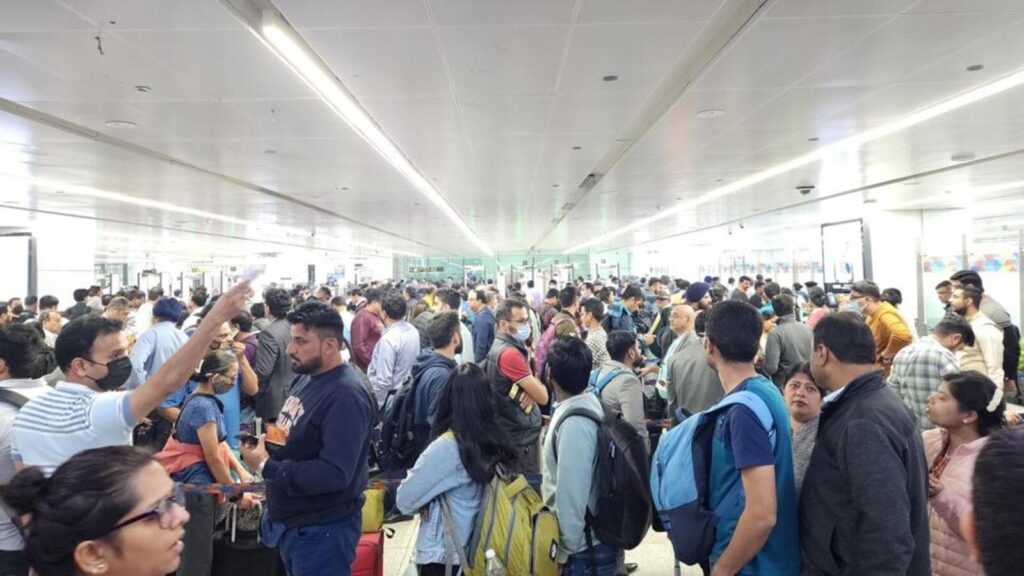Stampede-Like Situation at Delhi Airport’s Terminal 3: Over 50 Flights Delayed Amidst Passenger Chaos


Indira Gandhi International Airport’s Terminal 3 (T3) in Delhi recently experienced significant disruptions, resulting in a stampede-like situation as more than 50 flights were delayed. The chaos was primarily caused by a combination of stricter security protocols and dense fog, which severely impacted passenger movement and flight schedules.
To strengthen safety measures, security procedures at T3 were intensified, leading to long queues and extended waiting times. Passengers reported delays of several hours just to clear security checks, with some experiencing wait times of up to four hours. Radhika Gupta, CEO of Edelweiss Mutual Fund, took to social media to share her experience, noting that an airline staff member informed her that the average wait time was approximately 4.26 hours. She expressed hope for swift action to resolve the issue and improve the passenger experience.
The situation was made worse by an overwhelming crowd, creating a stampede-like environment. Passengers shared images and videos on social media, showing poor crowd management and lack of communication from airport authorities. The influx of travelers during peak hours, combined with rigorous security checks, caused major delays and confusion.
At the same time, dense fog enveloped Delhi, reducing visibility and complicating flight operations. Over 100 flights were delayed as pilots and air traffic controllers struggled with the challenging weather conditions. The fog also impacted runway operations, contributing further to delays. The India Meteorological Department (IMD) issued an orange alert, warning of dense fog and advising caution to travelers.
In response to the growing situation, Delhi International Airport Limited (DIAL) implemented special enclosures at all terminals to accommodate passengers affected by flight delays. These enclosures aimed to expedite security screening, allowing passengers to re-enter the Security Hold Area (SHA) without undergoing the full security process again. The initiative was designed to reduce waiting times and ease the discomfort of passengers dealing with extended delays.
The Ministry of Civil Aviation also announced steps to ease congestion, such as adding four additional X-ray machines for baggage screening and installing display boards at entry gates to provide passengers with real-time information about current wait times. These efforts were intended to improve transparency and help travelers manage their time more effectively during the disruptions.
Union Civil Aviation Minister Jyotiraditya Scindia conducted an impromptu inspection of Terminal 3 to assess the situation directly. Following his review, he announced several measures to reduce congestion, including opening additional entry gates and providing real-time updates on waiting times via social media channels. These steps were designed to improve passenger flow and restore order during busy travel periods.
The recent disruptions at Delhi Airport’s Terminal 3 highlight the challenges that major international airports face when managing high passenger volumes during adverse conditions. While the combination of heightened security measures and dense fog presented significant obstacles, the proactive steps taken by airport authorities and the Ministry of Civil Aviation aim to improve the passenger experience and operational efficiency. Continuous monitoring and adjustments to strategies are vital to ensuring smooth airport operations and maintaining traveler safety and comfort.
For More News Updates – https://khabarsearch.in/